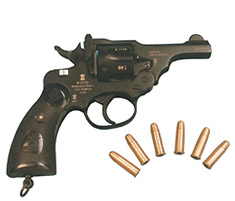When I recently blogged about TACOM’s efforts to expand the US small arms industrial base, Btr astutely noted that if the government was really interested in expanding the industrial base they would re-open the machine gun registry.
In India the opposite has occurred. The Indian government has a monopoly on the manufacture of civilian arms. Only a limited number of Olympic class shooters are allowed to import guns.

The consequence of this is that the government factories, which number about 40, can afford to let quality drop because they have a captive market of over 1 billion people. Now even the military are complaining about the monopoly.
The Hindustan Times reports:
“India produces the shoddiest guns in the world and sells them at ridiculously high rates,” says Swaran Singh, who owns an arms repair workshop in Jalandhar. “Every gun which comes out of the factories in Jammu or Bihar or the ordnance factories in Kolkata and Kanpur has a problem,” he says. Guns manufactured by the ordnance are marginally better, adds Singh, who repairs at least 25 new guns manufactured in Indian factories every month.
…
However, private licence-holders aren’t the only ones complaining. Forced to cope with weapons considered virtually obsolete in the international market, armymen are also saying it would be wiser to allow private players to manufacture arms and ammunition. “The government monopoly would break, the quality of weapons would improve and prices would fall,” says an official at the Army Headquarters. Besides producing defective weapons, the ordinance factories also do not meet delivery deadlines, says an official.
Over the years, the army has moved from the 7.62 mm self-loading rifle to the next generation Indian National Small Arms System (INSAS). But this 5.56 mm assault rifle is also known to develop major defects like cold arrest, breakage and cracking of components in strategic areas like the Siachen Glacier, Kargil and other high altitude areas, senior army officials say. Such defects were seen even during the critical Kargil conflict. The government was then forced to allow the import of one lakh AK-47 assault rifles from Romania at a cost of Rs 85 crore.
I highly recommend reading the whole article [ Google Cache Link ] . It gives insight into a unique situation.
Many thanks to Mehul for sending me the link.
 Your Privacy Choices
Your Privacy Choices
